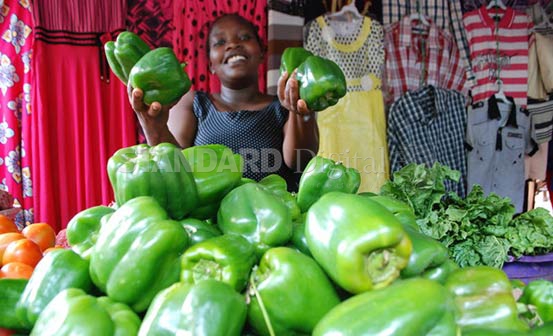×
The Standard e-Paper
Kenya's Bold Newspaper

Capsicums or pilipili hoho are a hardy plant. All they require is a slightly warmer temperatures than tomatoes or cucumbers.
It is rarely attacked by diseases or pests though it still needs proper preventive care. Plants are retarded by cool weather as they tend to harden and seldom regain the vigorous growth necessary for high yields. In cold weather, the fruit remains small, hard and malformed because of uneven pollination. The fruit may also have numerous growth cracks.







